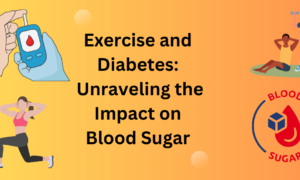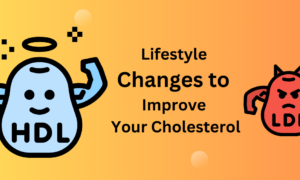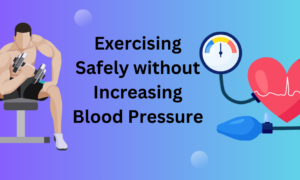Everyone’s fitness journey is shaped by their genetic code. The influence of genetics and fitness goals goes way beyond how you look; it determines how your body responds to different types of exercise, recovery and nutrition. Genes influence muscle fiber composition, aerobic capacity, hormone levels and metabolism which determines whether someone is naturally better suited for endurance, strength or aesthetic training. While effort and discipline are important, understanding your biological foundation helps you train smarter not harder and prevents frustration from unrealistic expectations.
Some people gain muscle easily, others excel at stamina based activities. Knowing these differences gives you clarity and direction. Your genetic profile doesn’t define your limits; it just shows you where you start from and how to get the most out of yourself through personalised training.
How Muscle Fiber Types Shape Your Training
Your muscle fibre composition is one of the biggest genetic factors that affect your performance. Humans have two main types: slow-twitch (Type I) and fast-twitch (Type II) fibres. If you have more slow-twitch fibres you will naturally do better in endurance sports, if you have more fast-twitch fibres you will do better in explosive, power based movements. Design your fibre type training around your natural distribution and you will be more efficient.
For example if you have a genetic predisposition to slow-twitch dominance you will benefit more from long distance running or cycling, if you have fast-twitch dominance you will see faster progress through weightlifting or sprinting. But both fibre types can be developed with targeted training over time. Knowing your ratio allows you to balance your program; build endurance without neglecting power or strength without neglecting stamina. Understanding fibre diversity will refine your fitness goals into sustainable, science backed progress.
The Role of Hormones in Physical Adaptation
Hormones are key to the genetics and fitness equation. Testosterone, cortisol, growth hormone and insulin sensitivity control muscle gain, fat loss and recovery speed. People with higher natural testosterone levels tend to gain strength and muscle faster and have a naturally athletic or natural body. Those with higher cortisol levels struggle with endurance and recovery due to increased stress responses. Genetics determine your baseline hormone levels but lifestyle and nutrition can optimize them.
Good sleep, resistance training and stress management triggers anabolic responses and allows your genetic potential to express itself. Knowing your hormonal tendencies also prevents overtraining and makes sure your program aligns with your biology. By combining genetic awareness with hormone conscious strategies you can maximize performance and long term health outcomes and bridge the gap between predisposition and results.
Endurance Training and Genetic Advantages
Not everyone is a marathoner born but genetics do play a big role in endurance potential. People with more slow twitch fibers and efficient oxygen utilization naturally excel at long duration activities. The interplay between muscle fiber types training and aerobic efficiency determines how well an athlete can sustain energy over time. Genes that regulate mitochondrial density, capillary networks and VO2 max; maximum oxygen capacity; determine endurance. But even if you don’t have these natural advantages you can still improve a lot with structured and progressive training.
Building aerobic base layers through steady state cardio, interval sessions and recovery based conditioning will increase stamina. Knowing the genetic aspect will keep your expectations realistic; someone genetically inclined to power sports can still run long distances but adaptation will take longer. Ultimately endurance development is about training consistency, recovery management and smart programming aligned with your genetic blueprint.
Strength Training and Fast-Twitch Power
If you’re crushing heavy weights or explosive sports, your genetic makeup is likely fast-twitch dominant. These fibers produce rapid, high intensity contractions for strength, power and hypertrophy. A natural physique with muscle density often comes from this trait. Resistance training, compound lifts and progressive overload will maximize this advantage. But if you have fewer fast twitch fibers you can still get strong through adaptation focused muscle fiber types training.
Genetics may define your ceiling but it doesn’t define your progress rate. Adjusting rest intervals, tempo and volume will get you better results. For genetically strong lifters managing fatigue and recovery becomes the key to continued growth. Strength training is about intensity and precision; qualities that allow genetic advantages to shine through discipline and science.
Genetic Factors in Aesthetic Potential
Aesthetics are the most visible of all. Bone structure, muscle attachment points, fat distribution and skin thickness all affect how you look naturally. Some people are born with broader shoulders or more symmetrical muscle attachments and look good with minimal effort. Others have to work harder to get the same visual results. Genetics determines the skeleton, training and nutrition refines the presentation. Focusing on body composition, posture and targeted isolation exercises allows anyone to improve aesthetics regardless of genetic predisposition.
Building muscle symmetry through resistance training and proper form will develop balance. Ultimately aesthetics is the harmony between what you’re born with and how you cultivate it; proof that knowing your biology doesn’t limit your artistry.
Nutrition and Genetic Metabolism Differences
Nutrition is part of the fitness equation but genetic variations in metabolism determine how well you process macronutrients. Some people metabolize carbs fast and thrive on high carb diets, others on fats and proteins. These tendencies match your genetics and fitness goals especially when you’re going for a specific physique or athletic outcome. Fast oxidizers do well on endurance diets, slower oxidizers on strength and hypertrophy. Knowing your genetic markers for lactose tolerance, caffeine sensitivity and insulin response helps you make better dietary choices.
A genetically tuned nutrition plan complements your muscle fiber types training by fuelling the energy pathways that match your training style. Personalised nutrition bridges the gap between genetic potential and practical performance, a sustainable way to health and longevity without unnecessary dietary restriction.
The Epigenetic Factor: Genes Are Not Destiny
While genetics provide the blueprint, epigenetics is how that blueprint is expressed. Lifestyle, environment and training can “turn on” or “turn off” genes related to performance. This is evolving and means genetics and fitness goals are not fixed. A sedentary lifestyle can suppress good genes, while consistent exercise can activate those that support recovery, muscle growth and endurance. Over time these changes are measurable even in people with average genetics.
The key is in sustainable training and recovery practices that influence gene expression positively. For example regular strength training can turn on fast twitch in endurance athletes. Epigenetics proves your genetic code is just a foundation, the structure you build on it is your choice. This mindset turns limitations into motivation for self improvement.

Genetic Testing and Personalized Training Plans
Modern genetic testing has made it possible to gain deeper insight into personal performance potential. By identifying markers related to recovery, injury risk, and muscle composition, these tests provide actionable data for designing optimized programs. Athletes can align their muscle fiber types training with their genetic profile, targeting weaknesses and leveraging strengths. For example, knowing you possess slower recovery genes can inform rest day planning, while identifying a predisposition toward fast-twitch fibers encourages shorter, high-intensity sessions.
Integrating such insights strengthens your genetics and fitness goals, eliminating the guesswork in program design. Still, testing should serve as guidance rather than limitation. It’s a tool for precision, not a verdict on what’s possible. Personalized training derived from genetic insights empowers individuals to achieve peak performance faster, safer, and with greater awareness of their biological individuality.
The Psychological Impact of Genetic Awareness
Understanding your genetic profile influences mindset as much as physical training. Some individuals find motivation in learning about their natural advantages, while others may feel limited by perceived shortcomings. Balancing awareness with optimism is key. Your natural physique and genetics and fitness goals should serve as a foundation for growth, not comparison. Genetics may affect rate of progress, but dedication, technique, and consistency ultimately define long-term success.
Focusing on controllable variables; effort, recovery, and mindset; creates empowerment. Accepting your biological individuality transforms fitness into a journey of self-discovery rather than competition. Psychological alignment with one’s physical nature promotes healthier training relationships and reduces burnout, ensuring progress is sustainable and fulfilling.
Gender Differences in Genetic Fitness Expression
Men and women experience the effects of genetics and fitness goals differently due to hormonal and structural distinctions. Testosterone, estrogen, and growth hormone levels influence how muscle and fat are distributed, as well as how quickly recovery occurs after exercise. Men generally build muscle faster, while women often have greater endurance capacity and fatigue resistance. These biological factors affect how individuals should structure muscle fiber types training; for example, women may respond better to higher repetitions and shorter rest periods, whereas men benefit from more intense, lower-rep strength training.
However, despite genetic tendencies, both genders can achieve peak performance through adaptive programming. Understanding these variations prevents frustration when progress seems uneven and promotes a more balanced approach to developing a natural physique. Training with awareness of gender-based strengths helps unlock performance potential while maintaining long-term health and hormonal balance.
Recovery and Injury Prevention Based on Genetic Traits
Your body’s ability to recover after intense workouts is largely influenced by genes governing inflammation, collagen synthesis, and oxidative stress. Some people naturally recover faster due to favorable genetic variations, while others require more rest and nutritional support. Recognizing these genetic factors can dramatically improve training outcomes by preventing overtraining and chronic fatigue. Incorporating muscle fiber types training with scheduled recovery cycles ensures adaptation without burnout.
Individuals with slower recovery genes may benefit from active rest and mobility work rather than continuous high-intensity sessions. Understanding how genetics and fitness goals intersect with recovery makes it easier to sustain consistent progress. A well-maintained natural physique thrives on smart recovery; balancing effort with rejuvenation. Listening to genetic cues and adjusting accordingly transforms recovery into an active part of growth rather than a setback in the training process.
Environmental Interactions with Genetic Predispositions
While genes shape your potential, the environment determines how much of that potential becomes reality. Factors like diet quality, sleep patterns, altitude, and climate influence how your body adapts to training. For example, someone genetically inclined toward endurance may still struggle in hot, humid conditions unless properly acclimatized. Similarly, strength-oriented athletes need adequate protein intake and rest to activate their muscle fiber types training efficiently.
Epigenetic research confirms that lifestyle can alter how genes express themselves, directly impacting genetics and fitness goals. Even small adjustments, such as exposure to sunlight or changes in workout timing, can influence hormonal balance and recovery speed. This interplay between genetics and environment reinforces that achieving a natural physique is about harmony rather than dominance; understanding your innate tendencies while cultivating external conditions that support your body’s unique rhythm.
Aging and Genetic Influence on Performance Longevity
As individuals age, the influence of genetics becomes more apparent, particularly in how the body maintains muscle mass, strength, and endurance. Certain gene variations affect how efficiently the body repairs tissue, regulates metabolism, and preserves hormonal balance. Those genetically predisposed to faster muscle loss must emphasize resistance training and adequate protein intake to maintain a strong natural physique. Aging also alters the response to muscle fiber types training, requiring longer recovery periods and lower training volumes.
However, genetics doesn’t mean inevitable decline; it means adjusting methods to sustain capability. Understanding genetics and fitness goals in the context of aging helps individuals adapt workouts intelligently. Combining strength preservation with flexibility and cardiovascular conditioning ensures lifelong functionality. With consistent care and smart adaptation, genetics can be an ally in extending performance, allowing individuals to remain active and strong well into later decades of life.
Conclusion: Training with Self-Awareness, Not Comparison
Your genes influence everything from how your muscles respond to training to how efficiently your body recovers; but they don’t dictate your destiny. Understanding genetics and fitness goals allows you to structure training intelligently, using muscle fiber types training and nutritional adaptation to optimize your natural physique. Embracing genetic self-awareness creates realistic expectations, prevents overtraining, and maximizes results.
Whether your body is geared for endurance, strength, or aesthetics, the real transformation begins when you align your habits with your biology. Fitness isn’t about defying your genetics; it’s about mastering them. Through consistency, adaptability, and a scientific mindset, you can turn genetic insights into actionable success, creating a body and mindset that reflect not just inherited potential but the discipline to fully express it.





















